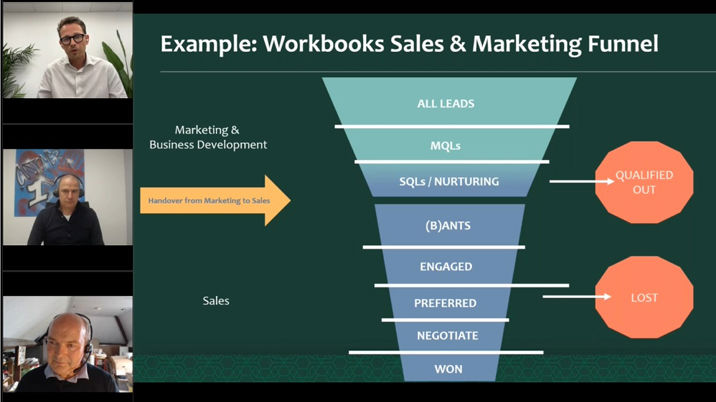
We all want to sell more, don’t we? Well, the good news is that by following best practice, which is as much about common sense than anything else, there are lots more sales to be had.
As Collingwood’s Fergus Gregory pointed out in our webinar this week (‘Optimising sales: what strategies are driving success for publishers?’), 70% of all leads generated by ‘marketing’ go untouched by ‘sales’!
Even putting a small dent in that figure could make a big difference.
Also on the panel was John Cheney, CEO of Workbooks CRM, who were sponsoring the webinar.
Here are eleven takeaways (there were many more which you can pick up on the recording, which you can watch by registering here):
- Make sure your sales and marketing teams are aligned. Even though each might have a completely different set of KPIs, they are two sides of the same coin, so should be working closely together.
- Ensure a proper feedback loop from sales to marketing is in place. Leads that sales ‘qualify out’ need to be fed back to marketing so that they can refine their marketing activities to exclude forwarding such “leads” in future.
- Define the sales funnel. Everyone should be clear what each stage in the process means and who is responsible for it. Of particular importance is the transition point between ‘marketing’ and ‘sales’ which should be subject to service level agreements.
- Have systems in place to ensure that leads produced by ‘marketing’ are followed up by ‘sales’. As Fergus pointed out, an eye-wateringly large number aren’t...
- Have systems in place to ensure that leads are followed up in a timely fashion. Again, a surprisingly large number are left too late, and the lead has gone cold.
- Track the digital journey of your commercial prospects. Certain activities (for instance, viewing a media pack) should feed through into the CRM in real time, prompting a timely sales call.
- Define your ‘ideal customer profile’ (ICP) and in such a way that it can be tracked in your CRM. For B2B titles, this typically will be based around type of business and job function. Capture this data into your CRM, which should be set up to score each prospect accordingly (1-10, 10 being a perfect fit, 1 being a waste of time and “why are you inputting me in the first place?”). These scores will underpin your sales and marketing efforts.
- Know your customer! For your top prospects, you need to build an in-depth knowledge of their needs, priorities, pain points, goals etc. This knowledge will enable you to sell into them and then cross and up-sell further as your relationship deepens.
- When recruiting, firstly know which role you are recruiting for — ‘new business’ and ‘account development’ require different skill-sets.
- Have a clearly defined onboarding process for new sales staff based on a codified sales play book. Onboarding and training is not something that should be carried around in the sales director’s head. It’s all about increasing the new recruit’s chances of success, teaching good habits, eradicating bad and imbuing company culture (“this is how we do things”).
- Makes ‘sales’ a company-wide activity. Everyone in the organisation should know what the ICP is and what their needs are. It’s a team sport!
Much of this involves breaking down organisational silos, measuring the right things, capturing the right data, recruiting and managing the right people and getting your CRM to do much of the heavy lifting.
Increased sales await!
You can catch James Evelegh’s regular column in the InPubWeekly newsletter, which you can register to receive here.












